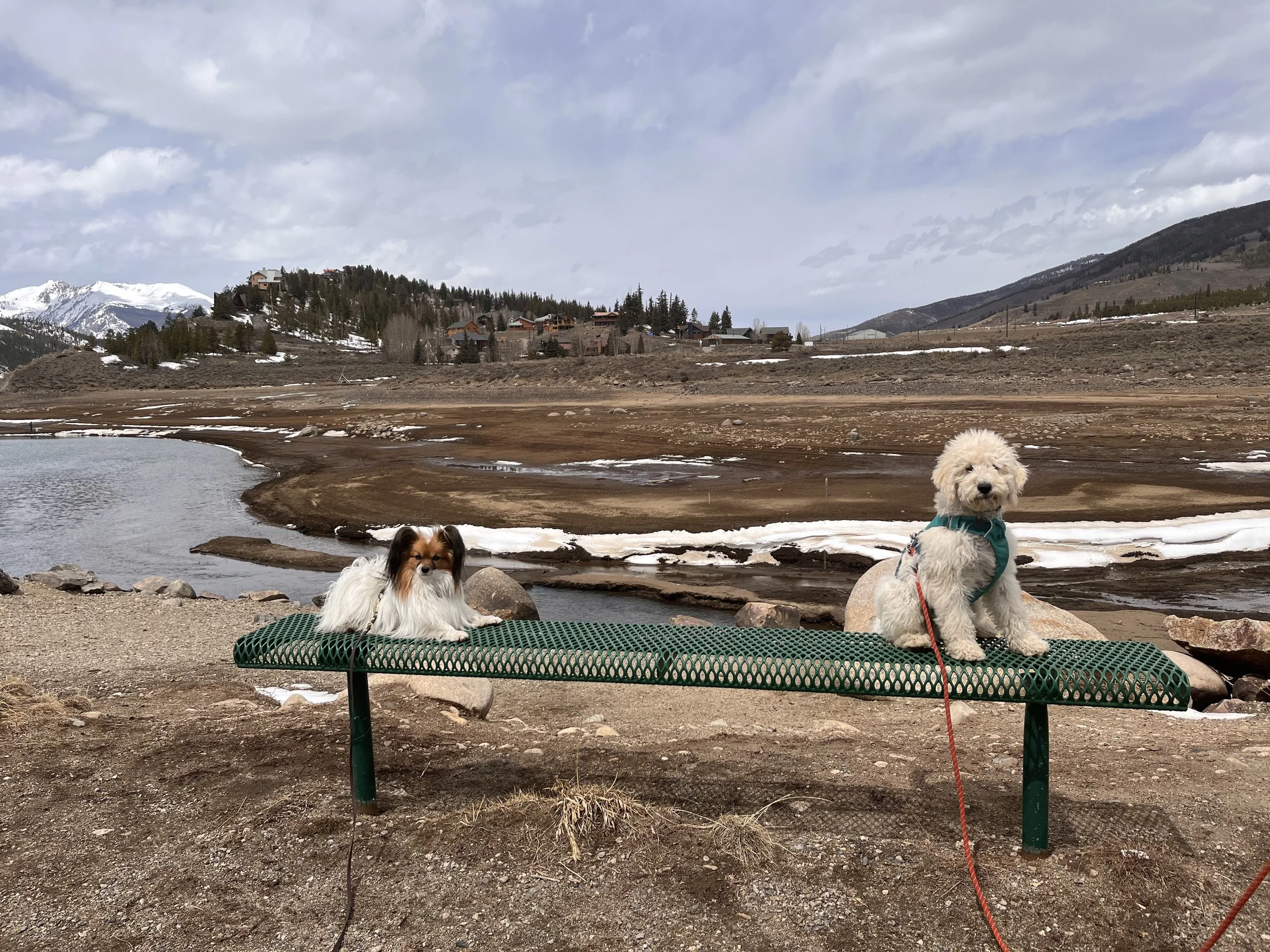Counter Surfing
By Benah Stiewing
Counter surfing is so much fun... for your dog! Dogs typically counter-surf for two simple reasons - it's interesting, which enriches their daily life, AND it often pays off with some high value rewards! However fun this behavior is for our dogs, it's typically not something we want them to practice in our homes. Not only is this hazardous for your food and other objects on your counter-tops, it can also be dangerous for your dog if they were to find & consume something unsafe. Below you will find enrichment, management, and training tips to prevent counter surfing and provide your dog with alternative behaviors that are safe and simple.
Because dogs often choose counter-surfing as a fun activity when they are bored and don't have other, more positive outlets, we have to consider enrichment as a key part of our behavior modification plan for counter-surfing. When considering your dog's enrichment needs, you have to take into account your dog's age, breed, & preferred activity level. A dog with a high drive for hunting and working will be getting a lot of mental benefits from their counter-surfing routine, and we need to be ready to replace that with appropriate outlets instead!
Easy Enrichment Activities:
Do training games or food puzzles for many of your dog's regular meals.
Keep a freezer full of frozen Kongs & other stuffable toys for a regular mental exercise when your dog needs it!
Teach your dog sniffing games on the ground, like find the treat or the toy.
Add in some extra walks, runs, hikes, or other physical activities to your dog's weekly routine.
Click here to view our recommended enrichment items & food puzzles!
Management is an essential piece of resolving counter-surfing behavior. If your dog is able to regularly practice getting up on the counters, and subsequently receives reinforcement (even in the form of a tiny little crumb of food), then they are likely going to continue to exhibit this very functional behavior. While we are working on replacing counter-surfing with better behaviors, we need to restrict our dogs' access to areas that have counters when we aren't around to supervise and redirect.
Even when we are around to supervise, sometimes our attention can be divided (i.e. cooking
dinner) and our counter-surfers can use that opportunity to sneak a tasty snack. Having a good management plan in place can help prevent that from happening! In practice, this could look like:
Use baby gates or exercise pens to keep your dog out of the kitchen when unsupervised.
Keep food away in the pantry, cabinets, and/or refrigerator.
Avoid leaving food on the counter as much as possible.
When in the kitchen cooking, use tethering to keep your dog restricted to certain areas.
You can either tether your dog to your waist so you can supervise closely, or pick a nearby doorknob.
The training game below is as simple as it sounds! We want to teach your dog that it’s more reinforcing to have all four feet on the floor. Through the enrichment and management techniques we discuss above, we’ve already made sure that your dog won’t ever be reinforcing for jumping on the counter. Now, we want them to learn what is reinforcing!
Four Paws on the Floor:
In your kitchen or other counter-surfing area, watch your dog and look for times when they have four paws on the floor. Mark and reward, then keep watching. Do they raise their nose up towards the counter surface, but keep their paws on the floor? Mark and reward!
If your dog struggles to even keep all four feet on the floor, you can ask your dog for a sit when they approach the counter.
Remember, we want to prevent the behavior, so ask them for a sit before they have begun to jump on the counter.
You can add in mild distractions on the counter-top (think baby carrots or something else dog-safe) as your dog is ready!
Do you need extra support with your dog’s counter-surfing behavior? We’re here for you! If you want additional support for you and your dog, we offer in-person Group Classes and Private Lessons in Fort Collins, Colorado and Chatham, New York, and virtual coaching right in the comfort of your home. As you work through your dog’s counter-surfing, it’s vital to remember that your dog is simply being a dog and working to access what is reinforcing - the more we can understand this and pay our dogs well for desired behavior, the better we may serve our dogs.
Summit Dog Training offers group dog training classes & private lessons in Fort Collins, Colorado, as well as online self-study courses & online private lessons for education on how to live the best life with your dog! If you are looking for more training support, please don’t hesitate to contact us! We’d love to help you and your dog get ready for any adventure.






